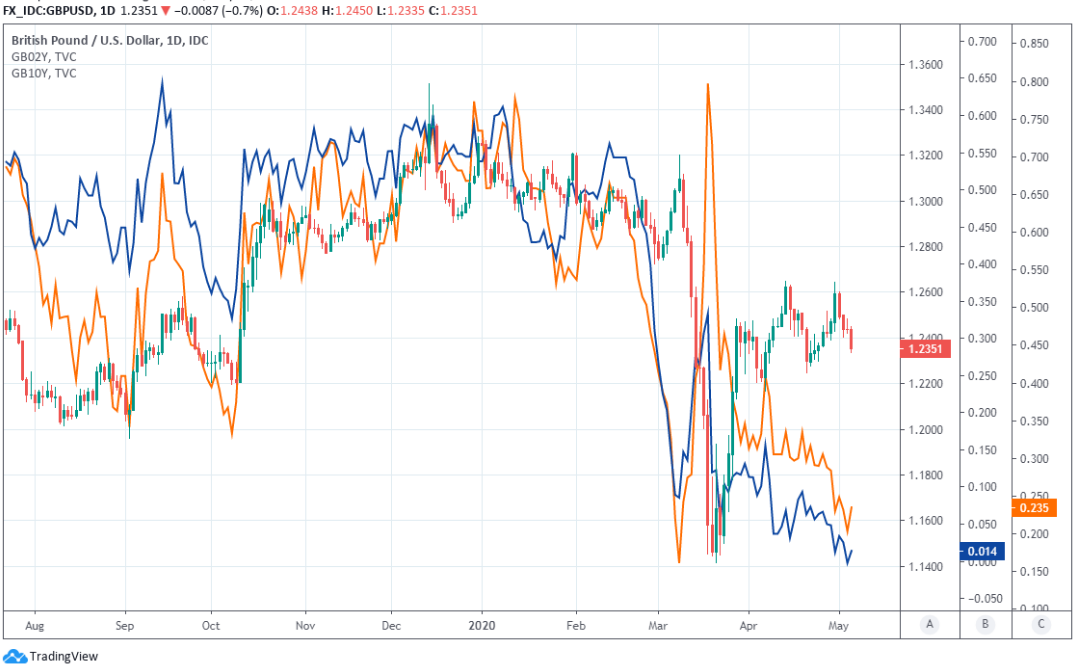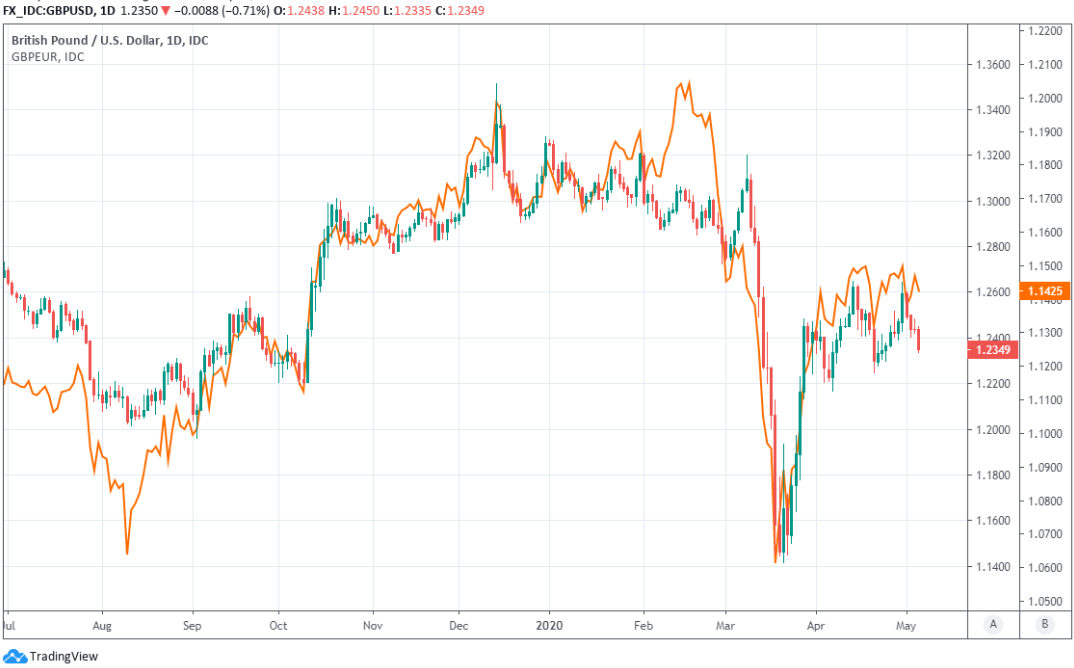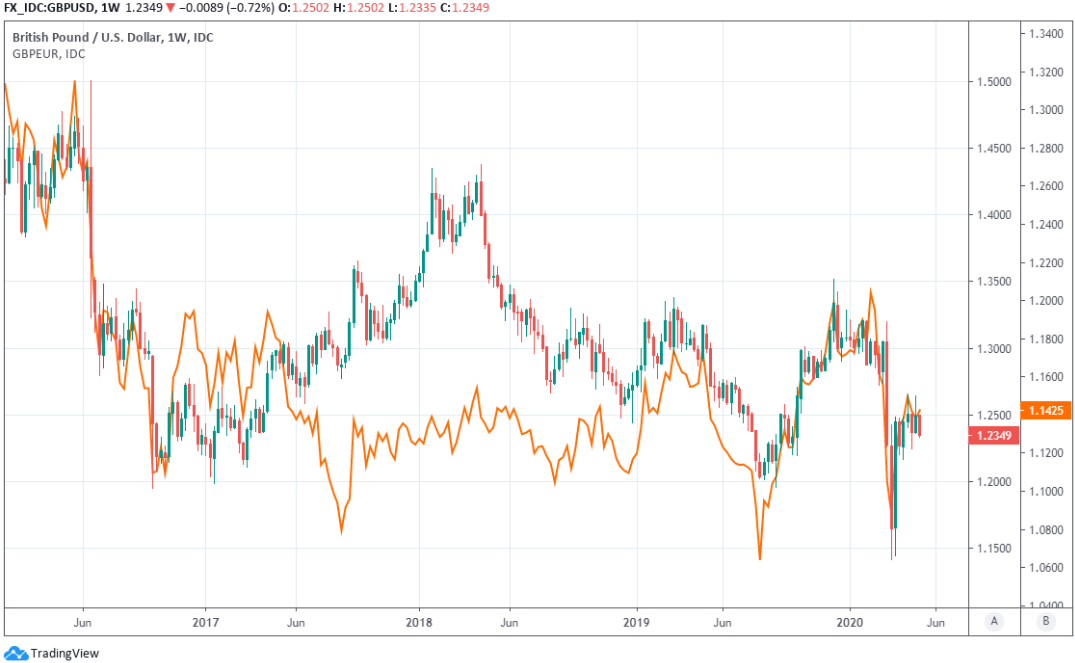Pound Sterling Weakness Welcome at Bank of England This Thursday
- Written by: James Skinner
-

© Bank of England
- GBP/USD spot at time of writing: 1.2357
- Bank transfer rates (indicative): 1.2024-1.2110
- FX specialist rates (indicative): 1.2171-1.2245 >> More information
Sterling was wallowing at the bottom of the major currency bucket Wednesday but is unlikely to get any help from the Bank of England (BoE) Thursday or at any time soon, because weakness in the Pound is likely welcome.
The Pound was on the defensive Wednesday in a session where stocks, commodities and other risk assets were all also in retreat after Automatic Data Processing Inc figures revealed the largest one-month fall in U.S. payrolls on record. This came with U.S.-China tensions back at the fore after Secretary of State Mike Pompeo reiterated the allegation that there's "significant evidence" the coronavirus escaped from a research lab in the China's Wuhan.
Currencies were trading with a risk-off tone and Pound Sterling was at the bottom of the bucket less than 18 hours out from the May Bank of England policy decision in which the market is looking to see Bank Rate left on hold at 0.10% and the £645bn quantitative easing programme left unchanged. Investors, analysts and economists do still widely expect the BoE to add hundreds of billions more to that QE programme at some stage but even if it doesn't do that Thursday, the bank is unlikely to show any love to Sterling.
The BoE will announce its slate of policy decisions at an earlier-than-usual time of 07:00 while the press conference will take place two hours later at 09:30.
"We suspect that the greater the commitment the central bank makes to backstopping government issuance and setting a cap on yields, the more potential there is for GBP to resume a softer tone. In this context, the market will also note with interest the new set of forecasts the central bank is set to produce. The more the BoE and its new governor Andrew Bailey emphasise disinflation risk, the more likely it is the market will suspect a weaker GBP will be happily tolerated by UK policymakers," says Shahab Jalinoos, head of FX strategy at Credit Suisse, who's tips a Pound-Dollar rate fall to 1.20 up ahead.
Above: Pound-Dollar rate alongside 2-year (blue) and 10-year (orange) British government bond yields.
Coronavirus has placed extraordinary demands on the public purse that are unprecedented for modern times and at a point when the government balance sheet is least able to accomodate the related increases in government debt. So much so that investors took flight from the bond market in March, prompting the BoE to step in with an additional £200bn of QE and to later agree an unlimited extension of HM Treasury's overdraft at the Bank.
Similar is true of most other countries impacted by the virus although it's the UK and Sterling that carry the developed world's largest current account deficit when imbalances are measured in percentages of GDP. That deficit leaves Sterling dependent for a part of its value on continuous inflows of foreign capital that risk being deterred by the credit risk stemming from the government's borrowing combined with the BoE's interest rate suppression.
"Tomorrow's BoE events will be falling due just as UK and EU negotiators reach the middle of their Brexit collision, and these factors alone are likely to exert a further braking force on GBPUSD gains. We would probably look to add to a short exposure in the pair on a close below 1.2300," says Stephen Gallo, European head of FX strategy at BMO Capital Markets. "It is critical to take stock of the fact that there is ample scope for monetary & financial policies to overlap with one another in the UK, as well as ample scope for coordination between the BoE, the Treasury and the DMO. The UK's floating exchange rate also helps immensely in a crisis scenario."
Above: Pound-Dollar rate at daily intervals alongside Pound-Euro rate (orange line).
The BoE slashed Bank Rate from 0.75% in January to a new historic low of 0.10% and has crushed bond yields, which have a more direct bearing on real world borrowing costs than base rates, to support the economy but this has pushed creditor returns to new historic lows at a time when risks associated with lending to the United Kingdom are rising rapidly. It's this lesser compensation which is a significant threat to the Pound.
At worst the reduced yields and higher financing requirement could see HM Treasury struggle to satisfy funding needs and would risk further damage to the economy. The BoE however, cannot tolerate an increase in bank rate or bond yields because that would also undermine the economy, although this doesn't mean there isn't anything at all the bank could do to enhance the returns of creditors and assure the government and country remain funded.
All the BoE would need to do in order to enhance those returns is to push the Pound over either in front of a crowd of spectators on Thursday or while out in the playground but at a time when nobody else is looking. This would enable propsective foreign creditors to buy more Sterling for less and in the process, augment the returns earned from UK government bonds but it also implies that if there's any one thing the BoE is not going to do any time soon, it's to help out the bottom-of-the-bucket British Pound.
Sterling will also be at risk in the weeks ahead from renewed Brexit headwinds as well as the prospect of again being designated 'the sick man of Europe.'
Above: Pound-Dollar rate at weekly intervals alongside Pound-Euro rate (orange line).
"Another three weeks of lockdown, or close to that, is likely to be confirmed by PM Johnson on Sunday, underlining again the fact that the UK is behind the rest of Europe in this crisis. We continue to see downside risks for the pound given the severity of the COVID impact looks to be greater in the UK than elsewhere," says Derek Halpenny, head of research, global markets EMEA and international securities at MUFG. "Deaths in the UK yesterday surpassed Italy."
Prime Minister Boris Johnson will announce on Sunday the government's plan for lifting the country out of 'lockdown' but this is only after intense lobbying from the media and the danger is, given the UK was among the last to get the virus, that could be some weeks yet before restrictions even begin to be lifted. This is as Italy and Spain, the epicentres of Europe's outbreak, joined others in having taken tentative steps out of 'lockdown' already.
The U.S. and some parts of Canada have also this week began to reopen their economies in spite of concerns in some parts, given outbreaks in those places are younger than they are in all of the large European countries. Nonetheless, an increasing chunk of the global economy is taking steps back toward some semblance of reality while the UK government is weeks behind and opinion polls suggest it's yet to convince the public that it's time to lift restrictions on daily life.
The UK had declared 194k coronavirus infections as of May 05, with an additional 4.3k on the day and 692 new deaths. It has the fourth highest global total and a number of deaths that's nearly half the 71k seen in the U.S. despite the world's largest economy having a population five times larger. It was the last major European country to contract the virus and the last to enter 'lockdown'.








